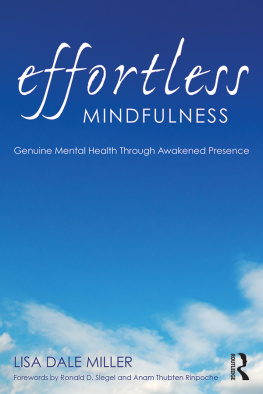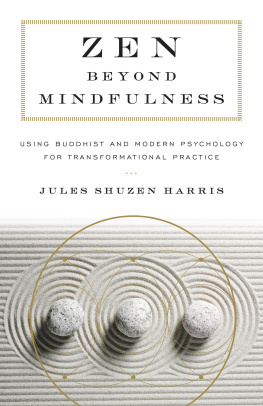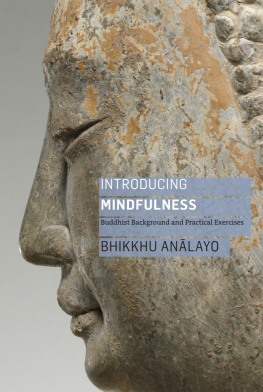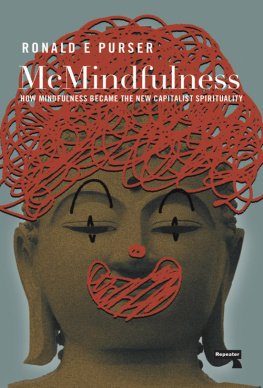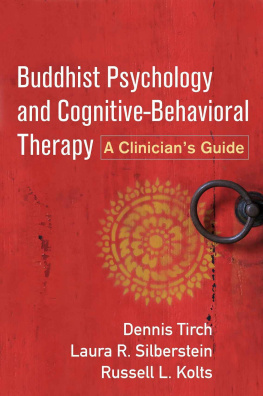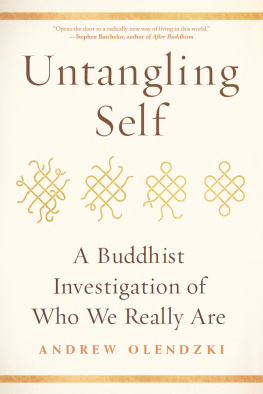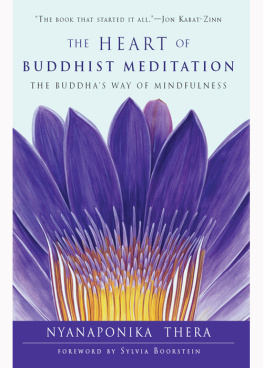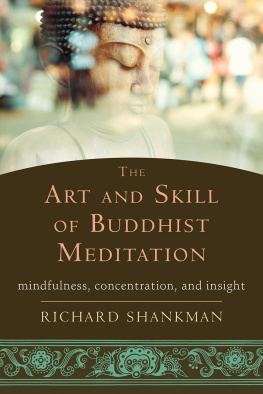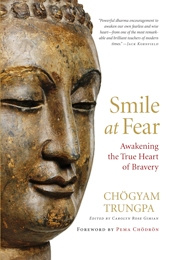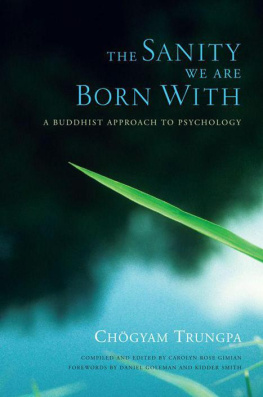This book is a reunification of clinical mindfulness and heartfulness interventions with their sourceBuddhist psychology and philosophy of mind. Central to this is an understanding that from a Buddhist psychological perspective genuine mental health is a natural outcome of an undeluded mind. Non-delusion arises from the direct experience of awakened presence an effortlessly embodied, fearlessly accurate reception of and interaction with the way things truly are. Because of its nonconceptual nature, awakened presence requires a natural movement from effortful mindfulness to non-dual or effortless mindfulness .
To accomplish that evolution, this book offers a modern Buddhist psychological understanding of mental health disorders through a scholarly, clinically relevant presentation of Theravada, Mahyna and Vajrayna Buddhist teachings and practices. Written specifically for Western psychotherapeutic professionals, it aims to move psychotherapy beyond symptom reduction to the liberative recognition of the empty transparency of self and phenomena.
The Buddhas teachings on Dependent Origination and conditioned mind form a primary psychological description of the suffering caused by misapprehending reality. Comprehending emptiness is vital to understanding the root causes of human delusion and resultant mental and emotional suffering.
The books focus on awakened presence and effortless mindfulness reflects my personal and professional journey with the Buddhist teachings and practices. Effortless mindfulness or resting in awareness is where most long-term Buddhist practitioners end up, no matter where they start. The utter simplicity of awakened presence is its transformative power.
Three weeks prior to receiving the final contract for this book, I fell 10 feet from a ladder. That fall demolished every bone in my left wrist and fractured my left hip. After my hospital stay I remained bedridden at home for a month. During that time effortless mindfulness was my greatest ally and an invaluable part of my healing process. A year and five chapters later, my right retina spontaneously tore, and once again writing was obstructedthis time by surgery and compromised vision. Again, effortless mindfulness and awakened presence were my anchors and greatest source of sanity.
How to Approach and Work With the Material in This Book
While this book was written primarily for clinicians, anyone interested in psychophysical well-being will benefit from this material. The books historical, contextual and philosophical content is not extraneous or secondary to its clinical information. Buddhist psychological theory is best understood when it is fully explicated in the context of contemporary psycho-neuro-bio-social research. Some of the most highly regarded Buddhist teachers, meditation neuroscience researchers and Buddhist-inspired clinicians have generously shared their knowledge and expertise throughout this book. So take your time digesting this rich and complex material.
Buddhist psychology builds on itself, philosophically and methodologically. The Theravada and Mahyna teachings and meditation practices are an indispensible prerequisite for understanding effortless mindfulness. While one could skip around, reading only parts of interest, I dont think that is the best way to receive the richness of Buddhist psychology or gain true understanding of its theoretical orientation.
I have paid great attention to the order in which the meditation practices are presented. Unless you are already a dedicated meditator, I suggest trying the practices in the order they are given. Each meditative/reflective practice is written to give clinicians exact instructions for teaching patients. However, it is imperative that any clinician teaching meditation be a committed practitioner of the meditation they wish to impart to others. That does not mean you try it once, or record it and never do it. The information, practices and teachings in this book should not be used frivolously or irresponsibly. Daily meditation and use of informal mindfulness and heartfulness skills are essential for effective delivery of Buddhist-inspired psychotherapy.
Each vignette or exercise is designed to teach clinicians Buddhist psychological inquiry and deconstruction skills. Always use your best clinical judgment. You know your patients best, and only you can determine which skills and practices should and should not be offered. Every clinician is a human being. We miscalculate and make mistakes. So dont be too hard on yourself if you try something and it doesnt work as you would have liked. Make sure to describe an intervention before offering it to a patient, and always use invitational language so she or he can freely refuse or express any reservations.
Above all, please enjoy this book. I have tried my best to describe unbelievably profound, complex and abstract information in easily digestible language, with a bit of humor thrown in for good measure. My greatest aspiration is that reading and implementing this books content will lead each reader to awaken to his or her true nature. May this book be the cause of liberation for all beings everywhere, and may any accrued merit be offered freely to end suffering in all its manifestations.
Start From Where You Are
We are in the situation of someone who possesses a beautiful car but doesnt know how to drive.
Bokar Rinpoche
Most mental health professionals find themselves working with people who appear to be hapless, captive passengers in their own untamed minds, with no idea how to drive the vehicle of mind toward its own innate tranquility and clarity. So it makes sense that mindfulness, which cultivates a calm, clear mind, is now widely recognized as an integral part of effective treatment for a variety of mental health maladies. Yet mindfulness is often trivialized or conflated with other interventions.
Coincident with the popularization of clinical mindfulness has been a movement to make mindfulness more accessible to everyone by separating it from its Buddhist roots. There are clinicians (myself included) who consider this effort unnecessary because these Buddhist roots have always been a philosophy/psychology of mind that is, at its core, secular and research oriented. Furthermore, mindfulness is just one of many beneficial tools contained within the profound Buddhist toolbox for awakening. Most of these tools, including mindfulness, have yet to be fully explored.
This book was born from a desire to ignite interest in reuniting clinical mindfulness with its sourceBuddhist psychology and philosophyand, in so doing, to return mindfulness psychotherapy to its primary function as the supreme method for liberating mind from primordial ignorance.
Central to this reunification is a deeper understanding of what occurs when a mind that is lost becomes found in the act of opening to and resting in the flow of experience. This is the innate mind of awakened presence, or what Tibetan Buddhist texts refer to as lhun grub or spontaneous presence . Awakened presence is the simplest state of awareness, yet its effect is profoundly liberating. Even 1 second of awakened presence frees us, in that second, from all manner of self-conceptions, including our incessant negative, self-deprecating, anxious internal narrativesthe primary source of mental and emotional suffering.
Spontaneous awakened presence is a direct experience often described as effortless mindfulness. Because of its nonconceptual nature, this kind of presence is impossible to achieve if one seeks it from within a conceptual or intellectual frame of reference. It is not a cognitive or behavioral intervention. It is difficult to induce through strained, focused concentration on internal or external phenomena. It cannot be imagined or conjured up through visualization. Awakened presence is a natural outcome of an embodied mind recognizing what is as it is.

